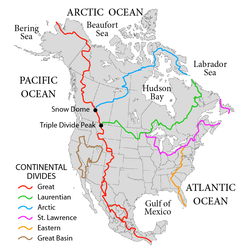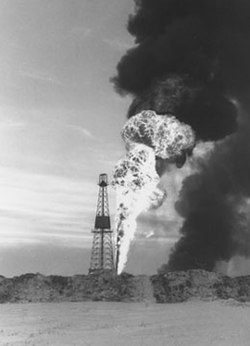| Date | Event | Reference |
|---|
| September 1, 1905 | Federal government's Alberta Act creates Alberta as a province separate from the North-West Territories. The whole district of Alberta, and parts of the districts of Assiniboine, Saskatchewan and Athabasca, combined to make new province. | |
| November 9, 1905 | 1st Alberta general election. The Alberta Liberal Party is elected government with majority of the votes. | |
| 1906 | Edmonton is confirmed as capital city of province. | "From the Press Gallery" Saturday News, April 28, 1906, p. 3 |
| 1907 | Strathcona incorporates as a city. | |
| 1907 June 8 | Strathcona mine disaster -- six are killed. It is the worst industrial disaster in Edmonton's history. | [37] [38] [39] [40] |
| 1906–1911 | Canadian Northern Railway and Grand Trunk Pacific Railway built through Edmonton and Jasper National Park. (The railways later were combined to form CN.) | |
| 1909 January 8 | Alberta's first Labour MLA, Donald McNabb, elected in Lethbridge City by-election. (He lost his seat in general election later this same year.) | |
| 1909 March 22 | Alberta's first Socialist MLA, Charles M. O'Brien, elected in the Rocky Mountain district. (He lost his seat in the 1913 general election.) | |
| 1910 December 10 | Bellevue mine disaster, Crowsnest Pass. 30 dead | |
| January 11, 1911 | Lowest temperature ever recorded in Alberta, −61.2 °C at Fort Vermilion. [41] | |
| September 3, 1912 | Alberta Legislature Building opens. Governor General of Canada, Prince Arthur, Duke of Connaught and Strathearn, cuts the ribbon. | [42] |
| 1912 | The cities of Edmonton and Strathcona amalgamate. | |
| May 14, 1914 | A.W. Dingman strikes wet natural gas at Turner Valley. This produced gasoline. The Turner Valley/Black Diamond oilfield became a major supplier of oil and gas and the largest producer in the British Empire. [43] | |
| 1912–1913 | start of economic crash. (Edmonton's population did not grow substantially again until 1940s.) | |
| June 19, 1914 | Hillcrest mine disaster, Canada's deadliest coal mining accident and deadliest industrial disaster, kills 189 workers. | |
| July 21, 1915 | 1915 Alberta liquor plebiscite. 61% vote in favour of Prohibition. Prohibition (ban on sale of alcohol) goes into effect on July 1, 1916. | [44] |
| April 19, 1916 | Women's suffrage movement prevails in Alberta, women earn the right to vote, with the passage of the Equal Suffrage Statutory Law Amendment Act. Alberta is the third province to grant the right. | [45] |
| 1917 March 1 | Alberta Provincial Police take over policing in Alberta. RCMP were out until 1932. | |
| 1917 | 4th Alberta general election .Louise McKinney and Roberta MacAdams elected to the Alberta Legislature, the first women elected to a legislature in the British Empire. McKinney and James Weir were elected under the label of the leftist Non-Partisan League [46] | |
| October 1918 | Spanish Influenza. Oct. 2 Alberta Board of Public Health order all citizens to be masked in public and theatres close. Around 4,700 Albertans die; more than 31,000 Albertans taken sick. | [47] [48] |
| 1918–1922, especially 1919 | Great Labour Revolt General strikes in Edmonton, Calgary and more. One Big Union is founded in Calgary. Workers at all but one of Alberta coal mines are on strike in 1919. | [49] [50] |
| July 18, 1921 | 5th Alberta general election the United Farmers of Alberta win election to government, electing 38 of the 61 members of the Legislature. Four Labour MLAs were elected, two in Calgary. The UFA government would hold power until 1935. | |
| December 6, 1921 | 1921 Canadian election the United Farmers of Alberta took ten of Alberta's 12 federal seats. Two Labour MPs are elected in Calgary to take the other two Alberta seats. | |
| November 5, 1923 | 1923 Alberta prohibition plebiscite, on the cancellation of prohibition. 58% vote in favour of clause (d), ending Prohibition and enabling government sale of liquor and private operation of beerhalls. Prohibition had been in effect since 1916, following the 1915 Prohibition plebiscite. | [51] |
| 1924 | Alberta adopts proportional representation in the cities and instant-runoff voting elsewhere, the first province in Canada to elect all its MLAs using non-plurality systems. (The STV/IRV hybrid system is in use until 1956.) | [52] |
| June 16, 1926 | The City of Edmonton receives a licence to operate airport, later named Blatchford Field, the first municipal airport in Canada. | [53] |
| June 28, 1926 | Provincial election. Single transferable voting used in Edmonton and Calgary. A UFA MLA and Labour MLA elected in Edmonton for first time. Also, Liberal and Conservative MLAs elected in Edmonton. Liberal, Conservative and Labour MLAs elected in Calgary. | [54] |
| December 14, 1929 | Alberta Natural Resources Act transfers control of Alberta's natural resources and Crown land to the province. | [55] |
| 1929–1939 | Great Depression. Massive unemployment. Prices plummet for agricultural products and manufactured goods. Southern Alberta suffers from drought as well. | |
| 1932 | Co-operative Commonwealth Federation (Farmer-Labour-Socialist) party, a predecessor of the NDP, founded in Calgary | |
| 1932 December 20 | Edmonton Hunger March. A demonstration by struggling workers and farmers is repressed by billyclub-wielding police, some on horseback. Subsequently, police raid the Hunger March headquarters. 27 leaders and activists arrested. [56] [57] | |
| 1933 | League of Indians of Alberta (LIA) founded by Cree and Stoney leaders from central Alberta. Later it became the Indian Association of Alberta | |
| 1933 | Blairmore, Alberta elects a city council of socialist activists. [58] | |
| 1933 – | July 2, 1934 Brownlee sex scandal captures widespread attention, resulting in the premier's resignation. He is replaced by Richard Reid. | [59] |
| August 22, 1935 | 8th Alberta general election. Alberta Social Credit League, led by William Aberhart, wins a majority of seats in the Legislature — ending 15 years of the United Farmers of Alberta being elected to majority power in the Legislature. The Social Credit government would hold power until 1971. | |
| 1935 December 9 | Coalhurst coal mine explosion kills 16, almost an entire shift of underground miners. (Coalhurst is located about 15 kilometres north of Lethbridge.) [60] [61] | |
| 1936 April 1 | Alberta became the first and only Canadian province to default on its bond payments. The province failed to redeem two bond issues totaling $3,200,000. (The bonds were eventually honored once the province's economy improved in the 1940s.) [62] | |
| 1937 | Lieutenant Governor John C. Bowen refused to give royal assent to three pieces of legislation passed by the Social Credit government. Two of the bills would have imposed government control over private banks operating in Alberta. The Accurate News and Information Act would have forced newspapers to print government rebuttals to stories the provincial cabinet deemed "inaccurate". The three bills were later declared unconstitutional (ultra vires) by the Supreme Court of Canada and the Judicial Committee of the Privy Council due to limits on the powers of provincial governments. The government's debt moratoriums intended to save homes and farms from foreclosure, were overturned by the federal government and the courts. [63] | |
| 1938 | Alberta Treasury Branches established as a provincially owned bank, as part of the Social Credit government's monetary reform policies. | |
| 1938 | Metis Population Betterment Act is passed into law by Aberhart's Social Credit government. Lands are set aside for Metis Settlement Associations, establishing Metis settlements at Buffalo Lake, Cold Lake, East Prairie, Elizabeth, Fishing Lake, Gift Lake, and other places. James P. Brady and Malcolm Norris were prominent in the process. [64] | |
| 1939 | Indian Association of Alberta founded by John Callihoo and John Laurie, based on the League of Indians of Alberta. | |
| 1939–1945 | Alberta plays a role in the WWII Allied war effort. This includes participation in the Commonwealth Air Training Plan, Edmonton being a base and administrative headquarters for construction of the Alaska Highway, and hundreds of planes being ferried through Alberta on their way to aid the Soviet Union's war effort. | |





